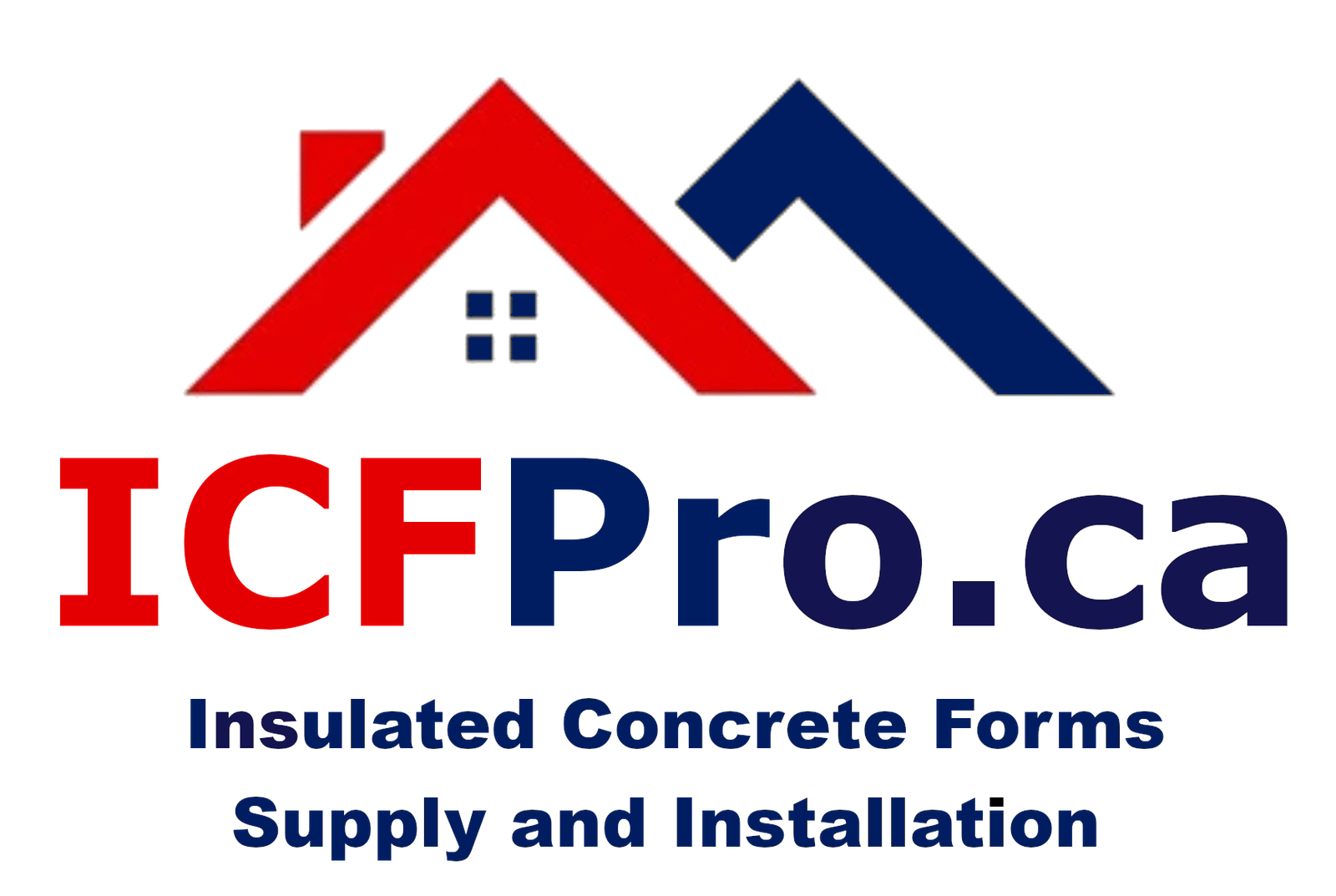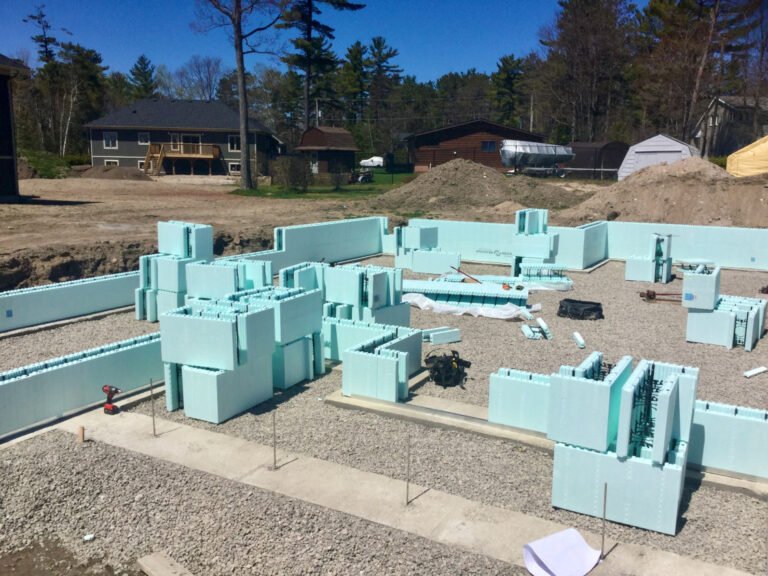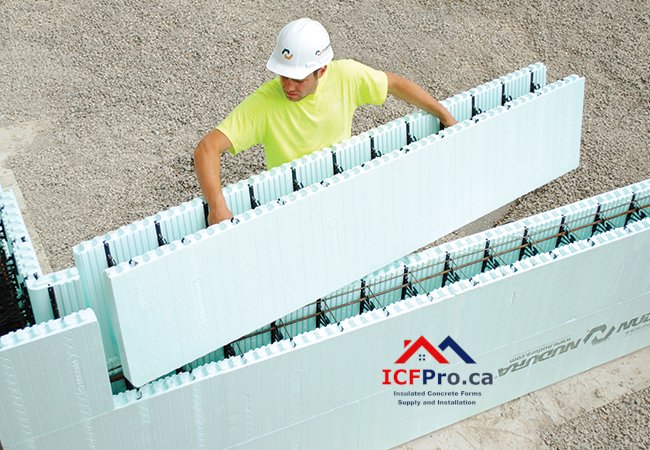ICFPro.ca is a division of ICFhome.ca - Phone 1 866 868-6606 - Direct Line 1 705 533-1633 - Email: info@icfhome.ca
Guide to Insulated Concrete Forms

The Ultimate Guide to Insulated Concrete Forms: Costs, Savings, and Why Your Wallet Will Thank You (Eventually)
Introduction: ICFs—The Rolls-Royce of Walls (But Your HVAC Bill Will Be a Bicycle)
So, you’ve heard the rumors: Insulated Concrete Forms (ICFs) are the way to build a house that’s tougher than a toddler’s bedtime negotiation skills and more energy-efficient than a cave. But then you saw the price tag: $40+ per square foot. Suddenly, your dreams of an ICF mansion collided with the reality of your bank account sobbing in the corner.
Fear not! Let’s dissect why ICFs cost more than a gold-plated hamster wheel, whether they’re worth it, and how to avoid selling a kidney to afford them.
The New Math: Why ICFs Cost $40+ Per Square Foot (and Where the Cash Vanishes)
Gone are the days of 18–18–32/sq.ft. In 2024, ICF construction starts at $40/sq.ft and climbs faster than a squirrel on an espresso bender. Here’s where your money evaporates:
1. The Blocks Themselves: Foam + Concrete = Cha-Ching
-
Basic ICF blocks: 10–10–15/sq.ft (up from 8–8–12 in 2023).
-
Fancy-pants blocks with vapor barriers, UV coatings, or built-in furring strips: 18–18–25/sq.ft.
-
Why? Polystyrene prices jumped 20% last year, and concrete’s up 12% (thanks, supply chain gremlins).
2. Labor: Skilled Workers Aren’t Cheap (and Cheap Workers Aren’t Skilled)
-
ICF installation requires crews who know their rebar from their risotto. Labor costs: 12–12–20/sq.ft.
-
Pro Tip: If your contractor says, “ICFs? Yeah, I’ve heard of those,” run.
3. Concrete: The Liquid Gold
-
Concrete pour: 6–6–10/sq.ft.
-
Bonus Costs: Pump trucks for hard-to-reach areas? Add 1,500–1,500–3,000 to your tab.
4. The “Oops, Forgot That” Fees
-
Engineering stamps: 1,500–1,500–3,000 (because walls that hold up your roof are kind of important).
-
Insulation upgrades: Want R-30 instead of R-23? That’ll be 2–2–4/sq.ft, please.
-
Total Damage: 40–40–65/sq.ft, depending on how fancy your foam blocks are.
“But My Cousin’s Friend Built an ICF House for $25/sq.ft in 2019!”
(Aka: Why Prices Are Rising Faster Than My Blood Pressure)
-
Supply Chain Meltdowns: Polystyrene factories are still recovering from the “Great Resin Shortage of 2022.”
-
Labor Shortages: The average age of a concrete worker is 47. Young folks would rather TikTok than tie rebar.
-
Energy Codes: Stricter rules mean thicker insulation, pricier blocks, and more engineering headaches.
-
Contractor Markups: ICFs are trendy. And trendy = profit margins wider than a Montana highway.
The Silver Lining: Why ICFs Still Win the Money War
Yes, $40+/sq.ft hurts. But let’s play long-term economist with your wallet:
1. Energy Bills: Prepare for Unicorn-Level Savings
-
ICF walls boast R-23 to R-30 insulation vs. wood framing’s measly R-13.
-
Monthly savings: 40–60% on heating/cooling (aka your HVAC system will sip energy like a Victorian lady sipping tea).
-
Over 30 years, that’s 30,000–30,000–50,000 saved (depending on climate and utility rates).
2. Durability: Your Grandkids Will Inherit This House
-
Tornado? ICFs laugh. Termites? They’ll starve. Mold? Not in this concrete fortress.
-
Maintenance costs: 70% lower than wood framing. No replacing soggy sheathing or rotty studs.
3. Resale Value: Cha-Ching, Part 2
-
ICF homes sell for 5–10% more than stick-built ones. Buyers love screaming-low energy bills and “survives hurricanes” bragging rights.
ICF vs. Traditional Building: A Cage Match for Your Cash
| Factor | ICF ($$$) | Wood Frame ($) |
|---|---|---|
| Upfront Cost | 40–40–65/sq.ft | 20–20–35/sq.ft |
| Monthly Energy Bills | 80–80–120 | 150–150–300 |
| Lifespan | 100+ years | 50–70 years |
| Resale Value | 5–10% premium | Market standard |
| Maintenance | Almost zero | Roofs, siding, pests, oh my! |
How to Build with ICFs Without Going Bankrupt
-
Hybrid Approach: Use ICFs for the basement and exterior walls; stick-build interior walls. Savings: 8–8–12/sq.ft.
-
DIY the Easy Bits: Assemble blocks yourself (they’re Lego-like!) and hire pros for concrete. Caution: YouTube tutorials ≠ experience.
-
Bulk Discounts: Order blocks for your entire neighborhood. Developers get 10–15% off—be the hero your HOA needs.
-
Tax Credits: The Inflation Reduction Act offers $5,000+ for energy-efficient builds. Cha-ching!
The Verdict: Is $40+/sq.ft Worth It?
If you’re staying put for 10+ years: Absolutely. The energy savings alone will cover the premium, and you’ll sleep soundly during storms (literal and economic).
If you’re flipping the house: Stick to wood. Buyers won’t pay extra for “hidden concrete” they can’t Instagram.
If you’re an eco-warrior: ICFs are the Tesla of walls—pricey upfront, but your carbon guilt dissolves faster than foam in acetone.
Final Thought: ICFs Are a Marathon, Not a Sprint
Building with ICFs is like buying organic groceries: You pay more today to avoid paying way more later (and feel smug while doing it). Sure, 40+/sq.ftfeelslikeapunchtothepancreas.Butin30years,whenyourneighborsarebankruptfromheatingtheirdraftyshoeboxes,you’llbesippingmargaritasinyoursilent,indestructible,40+/sq.ftfeelslikeapunchtothepancreas.Butin30years,whenyourneighborsarebankruptfromheatingtheirdraftyshoeboxes,you’llbesippingmargaritasinyoursilent,indestructible,80-a-month-utilities fortress.
And really, what’s the price tag on smugness?
Sources: FMP Construction, Fox Blocks, Element ICF, and my contractor’s invoice that made me question capitalism.



